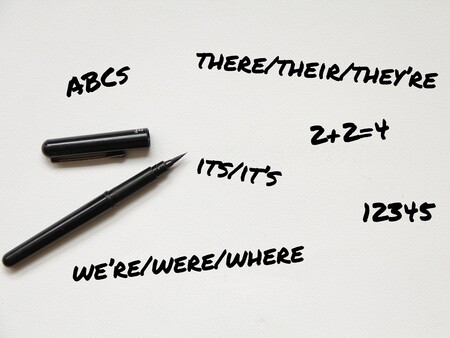
The Editing Company
Toronto, Ontario
Blog
RECENT POSTS
TEC Blog
Categories
Show All- Editing
- Grammar
- Usage
- Style
- Editor/writer
- Publishing
- Business
- Writing
- Writers support group
- Event
- Proofreading
- Copyright and permissions
- Usage
- Book reviews
- Editing new media
- Technology
- Books & libraries
- Ttc stories
- Editing & marketing
- Office happenings
- Social media & community
- Language & editing
- Social media
- Editing & marketing
- Indexing
- Book design
- Tec clients
- Guest blogger
- Creative women doing sixty
- Book clubs
- Books and reading
- Ebook technology & services
- Editing numbers
- Editing & technologies
- Opera, movies

“Back to Basics” Editing Rules
by Lesley-Anne Longo
Published at 2020-10-21
In this week's blog, we decided to share some of the most basic editing rules that editors must remember to follow, regardless of what type of text they're working with.
Do No Harm
Perhaps the most important rule in editing is this: do not introduce errors into the text you are working with! If a text requires a lot of markup and heavy editing, sometimes it can be easy to miss an extra space here, or a missing apostrophe there. However, it’s important to always be careful when editing in order to ensure you’re not introducing new errors into the text. If you’re not sure about a fact or claim, instead of just making a change, query the author and ask them to double check the information.
This basic rule also applies to more abstract edits, not just grammatical errors or typos. It comes down to the basic idea of “if it isn’t broken, don’t fix it.” Make sure you have a good reason for any change you make. Don’t alter perfectly fine writing just because it’s not written the way you would write it.
Don’t Change the Author’s Voice
One of the most common errors that new editors make is overediting. This can often result in the author’s voice getting lost, or removed entirely. It’s important to evaluate the text as a whole and take the author’s unique voice, tone, and style into account when editing a text. How do they use punctuation, choose their words, structure their sentences? These elements and more combine to create each author’s unique voice, one that can be recognized as belonging to a specific writer.
As you edit, remember to consider how your editorial decisions affect the author's voice. Make things clearer where necessary, and of course, correct, but keep in mind how your many small edits might be adding up to create a tone that is altogether different from the one that the author intended.
Don’t Change the Author’s Meaning
This basic rule is a little trickier. At TEC, we often have to be careful to follow this rule when working with more complicated writing styles, such as scholarly writing for academic journals. In this realm of editing, we may come across things that seem wrong to us, but may actually be commonly used phrases or words in the discipline the author is writing for. In cases like these, you may find it useful to remember that the author is the expert in the subject matter, not you as the editor. An editor’s job is to help the author get their point across and convey their information in a way that is elegant and easy to understand. This may entail querying the author more often, as opposed to just making edits outright, offering suggestions for rephrasing instead of just rewriting a sentence, etc. Language is delicate, and making even what seems like a small edit might change the entire point the author is trying to make. It’s important to keep this in mind as you work with a complicated text.
Ask Questions
This rule can be applied in two ways. The first is in terms of querying—asking the author about something in their manuscript or text. A query could point out a possible inconsistency in the narrative, a potential error, or something that is unclear. If the editor can’t understand what the author is trying to say, chances are readers won’t be able to either!
When an editor makes a query, the goal is to get the author to make a change that you think will help the text. However, no author can do this unless they know what corrections are wanted, so remember to be specific in your queries. Ask pointed questions, use examples, refer back to previous chapters or pages. If possible, offer a suggestion for how the author might solve the issue.
The second way this rule can be applied is to use questions to point out issues within the text that the author should be responsible for fixing. Remember, as the editor, it’s not your job to fix big-picture problems within the text or manuscript—your job is to help the writer fix it themselves. Guide them and help them to focus their attention on larger issues in the text and ask questions that help them spark ideas for how to improve the work or solve the larger issues. When using questions in this way, you don’t necessarily want answers, you want ideas.
Add to the Basics, Don’t Forget Them
Of course, there are many different editing rules out there. However, sometimes the basics get lost in the more complicated and detailed rules. It’s important to always keep the basics in mind, even as your experience grows. If you’re feeling stuck, think back to these basic rules, and see if asking a question would help move things along, or if this edit might change the author’s tone, or meaning.
For more on the relationship between author and editor, check out our blog, “First Things First: Building a Good Author-Editor Relationship.”




